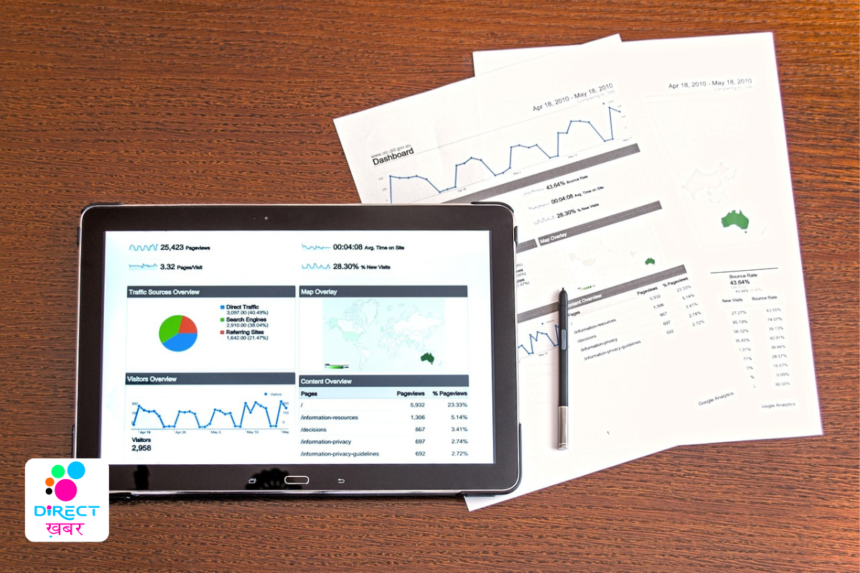Unveiling the Power of Predictive Analytics in Business Decision-Making
In today’s fast-paced business environment, the ability to make informed decisions quickly can mean the difference between success and failure. Predictive analytics has emerged as a powerful tool to help businesses gain valuable insights from data and make accurate predictions about future trends and outcomes. By leveraging advanced algorithms and machine learning techniques, businesses can uncover hidden patterns, identify potential risks, and capitalize on opportunities. This article explores the significance of predictive analytics in business decision-making and provides insights into how organizations can effectively harness its power.

Understanding Predictive Analytics:
Predictive analytics involves using historical data, statistical algorithms, and machine learning techniques to forecast future events or behaviors. Unlike descriptive analytics, which focuses on analyzing past data to understand what happened, predictive analytics goes a step further by providing insights into what is likely to happen in the future. By analyzing patterns and trends within data sets, predictive analytics enables organizations to anticipate customer behavior, market trends, and other critical factors that impact business performance.
The Benefits of Predictive Analytics
The adoption of predictive analytics offers numerous benefits for businesses:
Improved Decision-Making: By leveraging predictive models, businesses can make data-driven decisions with greater confidence and accuracy. Whether it’s optimizing marketing campaigns, forecasting sales, or mitigating risks, predictive analytics provides valuable insights to guide strategic decision-making processes.
Enhanced Efficiency: Predictive analytics automates the process of data analysis and prediction, allowing organizations to streamline operations and allocate resources more efficiently. By automating repetitive tasks and identifying areas for improvement, businesses can optimize their workflows and drive productivity gains.
Better Customer Insights: Understanding customer behavior is crucial for businesses to deliver personalized experiences and drive customer satisfaction. Predictive analytics enables organizations to segment customers, identify purchasing patterns, and anticipate their needs, leading to more targeted marketing efforts and improved customer retention.
Risk Mitigation: By identifying potential risks and uncertainties, predictive analytics helps businesses proactively mitigate risks and seize opportunities. Whether it’s predicting financial market trends, detecting fraudulent activities, or assessing credit risk, predictive analytics empowers organizations to make informed decisions and safeguard their interests.

Applications of Predictive Analytics
Predictive analytics finds applications across various industries and business functions:
Marketing and Sales: Predictive analytics helps businesses optimize marketing campaigns, identify high-value leads, and forecast sales trends. By analyzing customer data and purchase history, organizations can tailor their marketing efforts to target specific demographics and maximize ROI.
Financial Services: In the financial services industry, predictive analytics is used for credit scoring, fraud detection, and portfolio management. Banks and financial institutions leverage predictive models to assess creditworthiness, detect suspicious transactions, and manage investment portfolios more effectively.
Healthcare: Predictive analytics plays a crucial role in healthcare for disease prediction, patient diagnosis, and treatment optimization. By analyzing electronic health records and medical imaging data, healthcare providers can identify early warning signs, personalize treatment plans, and improve patient outcomes.
Supply Chain Management: Predictive analytics helps businesses optimize their supply chain operations by forecasting demand, managing inventory levels, and minimizing disruptions. By analyzing historical sales data and market trends, organizations can make informed decisions to ensure efficient supply chain management and minimize costs.

Challenges and Considerations
While predictive analytics offers significant benefits, organizations must address several challenges to effectively harness its power:
Data Quality and Availability: Predictive analytics relies on high-quality, relevant data for accurate predictions. Organizations must ensure data cleanliness, consistency, and accessibility to derive meaningful insights from predictive models.
Privacy and Ethical Concerns: The use of predictive analytics raises concerns about data privacy, security, and ethical considerations. Organizations must adhere to regulatory guidelines and ethical standards to safeguard customer data and ensure transparency in their predictive modeling practices.
Model Interpretability: Complex predictive models may lack interpretability, making it challenging for stakeholders to understand the underlying factors driving predictions. Organizations must strive for model transparency and develop mechanisms to explain predictions in a clear and interpretable manner.
Integration and Adoption: Integrating predictive analytics into existing business processes and workflows requires careful planning and organizational buy-in. Organizations must invest in employee training, change management, and infrastructure to ensure seamless integration and adoption of predictive analytics solutions.
Predictive analytics holds immense potential to transform business decision-making by providing actionable insights and driving strategic outcomes. By leveraging advanced algorithms and machine learning techniques, organizations can gain a competitive edge, enhance operational efficiency, and unlock new opportunities for growth. However, successful implementation requires overcoming challenges related to data quality, privacy, and adoption. With careful planning, investment, and collaboration, businesses can harness the power of predictive analytics to thrive in an increasingly data-driven world.






